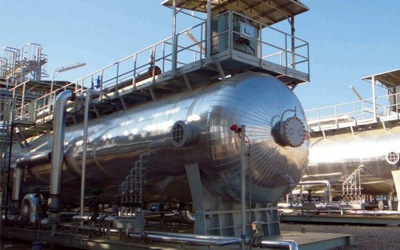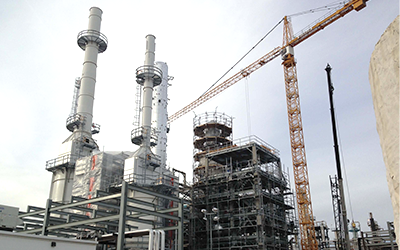Part 2
Part 2 in the series on how the chemical industry is solving challenges in the industrial sector. Focusing on desalter decontamination.
Refining is designed to separate crude oil into its component fractions. The separation is achieved principally by utilizing pressures from partial vacuums to many hundreds of pounds and temperatures from below the freezing point of water to over a 1000°F (538°C).
In general, these operating conditions are encountered in the initial separation processes of the crude unit.
The crude unit is the first part of the refinery where crude oil begins its journey to being processed into marketable petroleum products. The primary function of the crude unit is to separate the components of the crude oil into feedstocks for other refinery processes. This separation of the crude oil components is accomplished by distillation.
A modern crude distillation unit consists of the following five major processes:
- Desalting to remove most of the impurities for the raw oil.
- Atmospheric distillation to produce distillate streams.
- Stabilization to remove gases from the gasoline steam.
- Vacuum distillation to produce lubricating oils.
- Vacuum flashing to produce catalytic cracker feed and asphalt
When crude arrives at a refinery it will be placed into a large storage tank. In truth, the storage tank is where the separation of materials begins. This is where heavy solids (inorganic and organic) and water begins to settle-out. But, tank fouling is a topic we will save for a later discussion that deserves its own attention.
Desalter Decontamination
The Desalter is the first equipment that will receive the raw oil as it is pumped out of storage. These drums are very large horizontal vessels where sediment will accumulate.

In the Desalter, crude oil is washed with water to remove soluble salts and particulates. The brine water is present in the oil as a fine suspension of droplets and as an emulsion. Removal of the brine water is important as concentrations of salt can cause corrosion during the process and water can negatively impact efficient distillation.
This separation is aided by an electrical charge and the addition of chemicals to remove the contaminants. The desalting process will remove more than 90% of the salt and sediment from the incoming crude oils. The contaminants that are not separated by desalting will foul process equipment by accumulating as debris in heat exchangers, tower trays, piping and promotes the formation of coke deposits in the furnace tubes.
Desalter debris is notoriously difficult to clean-out. It is heavy tars mixed with inorganic salts and production sand. The cleaning process is made more difficult as the equipment internals act as obstacles to circulation methods. But, desalter decontamination can be achieved. Effective chemical cleaning of the desalter drums is accomplished by use of well-chosen solvent-based cleaners designed for dissolving heavy tars and for deep penetration of the heavy tar-bed. After fluidizing the resident tars, the cleaning process typically should include the circulation of the appropriate acidic surfactant to remove the corrosion products which foul these drums. Care must be taken not to introduce chemical products that can promote emulsion formation or stabilization. This is quite important as residual amounts of cleaning agents have and do cause water-in-oil emulsions inside of the desalter on resumption of operations that then cause downstream processing upsets.
Given the challenges of the equipment design to facilitate cleaning operations, the choice of proven effective chemical products can be the difference in a successful clean-out versus a failure. Properly chosen chemical products can greatly reduce waste volumes, significantly reduce operational outage time, enhance the amount of resource recovery, cut maintenance costs and improve the already difficult circulation application process.
Of equal importance to successful chemical cleaning of the desalter is the design of the mechanical application. Always plan to circulate the cleaning solutions top to bottom and end to end. Where possible, the insertion of 3D nozzles on lance rods can greatly aid the mechanical disruption of compacted tar beds speeding up the chemical activity. If the equipment mud pumps are functional, turn it on and use it during the chemical cleaning. Use of positive displacement, high volume pumps are preferred over centrifugal pumps to perform fluid circulation. The presence of large amounts of solids can damage centrifugal pumps.
Depending on the level of fouling, plan to circulate the vessel 1-2 days with the solvent-based product to dissolve the tars prior to introduction of the preferred acidic surfactant product. In general an operating temperature of around 150°F (66°C) should be adequate for a successful cleaning job.
Desalters are difficult equipment to clean. Choosing chemical products designed for the purpose and a skilled contractor who has the equipment and experience, means your desalter decontamination will be successful in less time and for less expense.
Learn more about desalter decontamination on our desalter refinery page.



